What is your company's Social Media Strategy?
 With the Christmas shopping season officially starting this weekend the new year is not far off. Are you now or have you already prepared your budget for 2014. What is on your social marketing wish list? Or to be a bit broader in scope, your Digital marketing wish list.
With the Christmas shopping season officially starting this weekend the new year is not far off. Are you now or have you already prepared your budget for 2014. What is on your social marketing wish list? Or to be a bit broader in scope, your Digital marketing wish list.
Are there things that you feel would improve the overall performance of your online initiatives? Does upper management understand the importance of digital marketing in today’s marketplace or are you still in an uphill battle in trying to convince them to allocate more resources?
Â
Your Social Marketing Holiday Wish List
By Elisabeth MichaudThe new year is right around the corner, and it’s time to pull together your plan. You’ve been very, very good (at social marketing) in 2013, so now’s your chance to ask your boss for the things you need in order to make 2014 even better. Here, we’ve outlined the 5 things you absolutely MUST include on your social marketing wish list, and how to explain them to your boss so she’ll know exactly what value they’ll bring to your brand over the next 12 months.
1. Budget (or, more budget) for promoted social media posts
You may be spending to promote organic content already (especially given that organic posts for brand pages reach only about 10% of the page’s audience), or you may be planning to start, but either way, you’ll need a bigger budget for it over the next 12 months. With promoted content options now available on Facebook, Twitter, LinkedIn, and even Pinterest and Instagram, a social media manager needs access to some of her brand’s ad budget. Ask your boss to help you work with your ad agency or in-house team to get control over some of those marketing dollars! You’re in a great position to know where to spend; you know what posts perform well, what type of content your fans tend to enjoy, and where putting money behind your day-to-day content efforts can really pay off. So ask your boss for a chance to put your money where your social is!
2. Some Santa’s Helpers
Is your brand getting bigger and bigger in social thanks to your hard work? Are you becoming overwhelmed with trying to be everywhere all the time, and maximizing return on time (and money) invested in social? Maybe it’s time to ask for some additional help! Argue your case with metrics that show your achievements in 2013 and how they’ve benefited the brand (think: fan/follower growth leading to increased awareness, a higher number of average pageviews on your site from your social audience in Google Analytics, growth in impressions, increased engagement metrics, and more), then share a plan for adding more hands to your social marketing team and what you can expect to achieve with that extra help. A potential bonus? A promotion may be in the cards for you in early 2014 when new team members come aboard.
3. Design essentials: stock photography credits, your own Photoshop license, or maybe even a graphic designer
We’ve cited the importance of images and video in social media many times, and these will only continue to grow in significance in the coming year. You probably already have the makings of some great visual content, whether your brand is mostly B2C or B2B, but you may not yet be using those resources to the fullest. A lot of social media marketers are great writers—words are how we communicate with our audience!—but not all of us are great with imagery and graphics. To play in 2014’s social media world, you need photos and videos to fully take advantage of platforms like Instagram, Pinterest, Tumblr, Vine and to produce the best-performing content on Facebook and Twitter. You’ll need access to graphic resources like stock photography, Photoshop, or a graphic designer with time dedicated to helping the social team. Show your boss why it’s important by sharing stats on the social networks your audience is most active on, and point to the effectiveness of images and video on some of the biggest platforms: Facebook, Twitter and YouTube.
4. The ability to act in real (or near-real) time
Does your boss need to approve every tweet before you send or schedule it? Does every piece of content need to be vetted by multiple departments? This item is a big ask, but you need your boss or your coworkers’ trust—trust we know you’ve earned this year—to post more freely, in a more timely manner. The bonus for your brand? You’ll be able to produce content more quickly, meaning you can keep up with social in real time. While not every post will be created on the spot, there’s space for both planned and spontaneous content in your social strategy. Talk to your boss or PR department about what the advantages of each type are, and try to use the opportunity to set up a more real-time friendly environment in social. If brands like Oreo can do it, why not yours?
5. A really great social media marketing tool
Have you been cobbling together a bunch of different free and paid social media tools in order to get the information you need about ROI, engagement, fan growth, and more? Is it really working for you? If your annual contract(s) for your paid tools are about to run out, this is a great time to reevaluate and hunt for something new—a better tool or set of tools than what you’re currently using. Depending on your marketing goals, this could be a real-time social media marketing tool like uberVU, a better CRM system, an upgraded website analytics tool, or a combination of these things. Does your top pick have a bigger price tag than what you’re currently using? Show your boss how it’ll make you more productive and allow you to complete daily tasks faster, leaving you additional time to grow the business.
Activating Employees In Social: Is Your Organization Ready?
Tags:
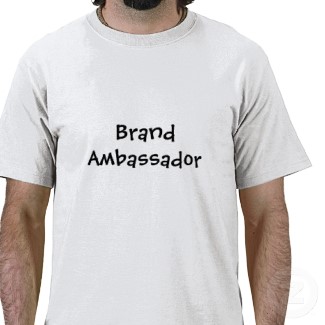 Your employees are one of the best (and often underutilized) tools you have in your social toolkit. Your employees can help amplify your brand’s messages and help you tell the brand’s story. Plus – your employees’ messages will be more trusted than your brand messages. 90% of consumers trust recommendation from people they know and only 14% trust advertising. When it comes to powering employees in social, it seems like a no brainer.
Your employees are one of the best (and often underutilized) tools you have in your social toolkit. Your employees can help amplify your brand’s messages and help you tell the brand’s story. Plus – your employees’ messages will be more trusted than your brand messages. 90% of consumers trust recommendation from people they know and only 14% trust advertising. When it comes to powering employees in social, it seems like a no brainer.
Is your company ready to activate employees to be brand advocates?
The Social Arts and Science Institute (SASI) has put together an Employee Activation Maturity Assessment that outlines the critical competencies companies need to be successful with employee advocates.
1. Policy & Governance. It’s critical that companies have social media policies in place before rolling out employee advocate program. What role are your employees going to play in your overall corporate social media strategy? How are you going to manage and support them? Social media policy is important to help mitigate the potential risk associated with setting teams free to engage in social channels as well as help employees feel empowered to engage on social.
2. Training. Social media training is a critical part of any employee advocate program. A recent survey (http://marketingland.com/survey-71-of-companies-concerned-about-social-media-risks-only-36-do-social-media-training-60212) revealed that 71% of executives said that their company was concerned with potential risks posed by social media. Yet only 36% claimed that their organizations had social media training. It’s important to train employees on social media best practices, company policies and strategy. Similarly to policies and governance, training employees in social media can help mitigate risk as well as provide employees with the skills they need to be successful.
3. Metrics & Measurement. As with any initiative it’s important that companies are set up to measure business impact of their Employee Advocate Program. Powering thousands of employees in social channels will drive lots of social shares and helping the organization reach new audiences and prospective new customers. Because of such, it’s critical to track and measure the KPIs that matter most so that you can prove value and deliver results.
4. Tools & Technology. In order to activate employees in social channels, it’s important that they have access to the tools they need to be successful. At the most basic level this means providing access to consumer tools to facilitate social engagement and sharing. Organizations that have truly made a commitment to social will actually provide employees with access to enterprise tools to allow employees to listen to and engage with relevant conversations and topics at a more granular level.
5. Leadership. Arguably one of the most important parts for successful Employee Advocate Program launch is executive buy in. The most successful social companies not only have buy in from leadership, but the executives are social themselves, leading by example.
For more details view the full chart below.
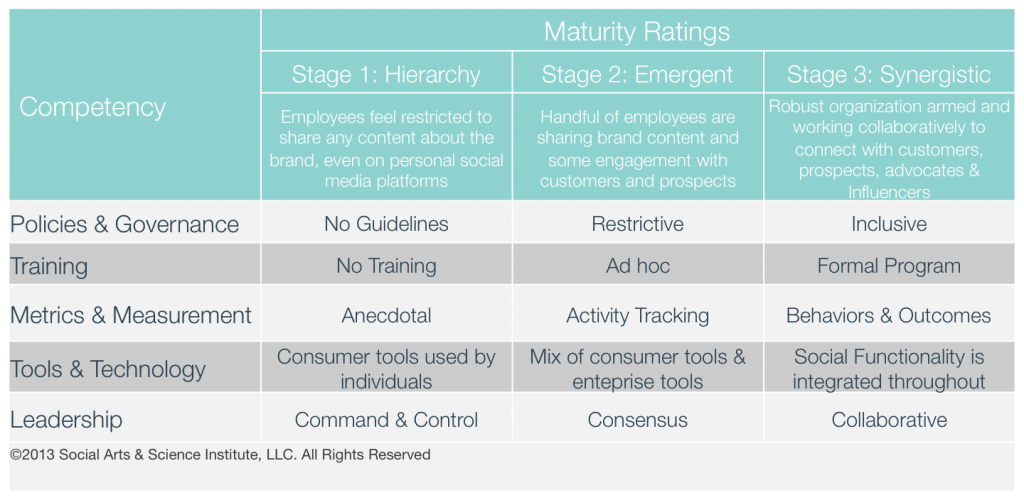
Relevant Articles:
Are You Ignoring your Best Brand Advocates?
Must Have Social Marketing Tools
Â
Â
 There is an under appreciated difference between a story and an idea.
There is an under appreciated difference between a story and an idea.
A story is captivating and memorable. It entertains and often stays with you for longer than you thought it would. An idea, in contrast, is a spark. It happens in a moment and then it’s gone. And if you missed it or if you never acted on it … then you lose it.
Recently I’ve been to several storytelling events. One gathered together a dozen innovators to share their stories on human behavior. Another curated every form of storytelling you could imagine – from stop motion Vine video creators to street opera singers. Each offered an amazing collection of stories that entertained and inspired. And I remember those stories.
Today I have been moderating an event filled with ideas instead of stories. The Corporate Social Media Summit in San Francisco (#CSMSF) is the second edition of a popular series from the Useful Social Media team that includes a flagship New York event, the West Coast edition today, and a European edition next month. In listening to more than a dozen brands sharing their experiences with social media – there were several ideas that emerged which got people talking. Here are just a few of those ideas:
1. Deflection Isn’t Engagement
As more brands turn to tools like Twitter for customer service – one of the increasingly common strategies is to “escalate†issues to the call center. What this actually means is that brands immediately engage with customers who share a question via Twitter by telling them to call the 1800 number to speak to a customer service person. As Adobe Director of Strategy and Business Development Jeff Feldman shared in the opening keynote session, this type of deflection isn’t optimal. Instead, brands that aspire to provide great service need to answer questions in the channel they are asked (unless you truly need to access their private information, of course).
2. B2B Is Better Than B2C For Social
Thanks to the visibility of efforts from leading brands like Coke and Oreo’s, it is easy to focus attention on the role that social media has taken in helping major consumer brands to create lots of buzz and some engagement. Instead, Dell’s Global Director of Social Media Richard Margetic pointed out that social media is actually better for B2B brands because they tend to be far more about relationships than B2C brands. As a proof point, he noted that more than 9,000 of Dell’s employees have gone through social media training and are allowed to represent the brand in their engagements online.
3. Social Gratitude Is Powerful
It is no secret that people passionately share stories and images of pets online. So when Kat Smith, PETCO Director of Social Media and Commerce took the stage to talk about how social media could engage pet owners – the opportunity was pretty obvious. Still, the big question was how a brand in the popular pet category could engage with these passionate pet owners in a way that wouldn’t just try to upsell them more supplies and materials. One great strategy Kat shared in her presentation was the power of offering validation to customers. Simply by having the brand like customer’s Instagram photos, for example, PETCO could offer tangible proof that it was listening and engaged in its community. And this one act caused intense consumer gratitude … which then led to engagement and conversation.
4. Solve Unique Problems
As often as we hear about social media offering yet another channel for brands to interact and solve customer challenges, there may be situations that social media or social customer care is uniquely positioned to solve. One example that Kimarie Matthews, Wells Fargo Vice President of Social Web shared was of a customer tweeting about there being trash outside of an ATM machine. This is exactly the sort of thing that no one would ever call into a 1800 number and wait on hold in order to report. Yet thanks to this tweet, the brand was able to respond both to the customer as well as respond by actually correcting the problem and cleaning up the trash!
5. Treat Everyone Like An Influencer
In a highly entertaining presentation about the state of the travel industry, disruption, handlebar moustaches (for Movember!) and being Canadian – Flight Centre Global Social Media Leader Gregg Tilston shared a powerful story about the nature of influence. Using the example of how you might be influenced differently to attend a food related event whether you hear about it from the newspaper versus a restaurant versus a chef versus your best friend … he noted that the most influential source among those is probably your best friend. That is also the source among those listed with the least ACTUAL influence when it comes to potential reach and size of their network. So who is truly influential? His ultimate conclusion: “Treat everyone as if they have a Klout score of 80.â€
6. Social Can Force Convergence
Telling the story of how the Clorox brand thinks about social media, Helen Lee shared how increasing conversation online inspired far more convergence and collaboration among all of the more traditional silos of the marketing organization – from advertising to PR to in-store promotions. One interesting conclusion her presentation raised was to turn one of the most often cited challenges about social media into perhaps its greatest opportunity. As brands struggle to align efforts among multiple teams and divisions, the crossover potential of social media may become the driving force to actually help make it happen.
7. Focus On The Audience You Have
As audiences shift and the attention paid to social media platforms evolve, segmenting an audience is a consistent challenge. One of the downsides of this challenge, as Ammiel Kamon from Kontera noted, is that sometimes brands can get romanced or misled into focusing on creating content and messages for the audiences they want instead of the ones they have. The key is to remain connected to the audience you have today and grow that organically rather than dreaming of a nonexistent audience you wish you had instead.
8. Avoid OverEngagement
What if greater engagement wasn’t the ultimate goal that every brand should aim for? As Charles Schwab VP of Owned Media, Content & Client Marketing Helen Loh shared, “money is important, but sometimes people don’t want to engage with it day in and day out.†As great as the temptation may be for any brand to think that customers always want a brand interaction, the reality is that most of the time they probably don’t. Understanding customer journies and engaging customers at the right moments along that path is more important, according to Loh – and something that really allows the promise of content to connect with social media.
9. Don’t Measure Social Media, Measure Initiatives
In an interesting caution against taking data from a unique effort and overestimating its ability to define the entire value of social – Thomson Reuters Senior Director of Social Strategy Jen McClure shared that the real key to understanding the power of your efforts is to separate out what the results are truly telling you about what went right and wrong, and how to apply those learnings effectively.
10. Find Opportunities To Delight
Southwest Airlines has built a reputation around having a personality, and as Senior Communications Specialist Christi McNeill shared – this extends to creating opportunities for staff to build on the strong culture to delight customers with service. KLM Manager of Social Media Karlijn Vogel-Meijers also shared several new initiatives that KLM is pursuing which have the potential to truly drive the airline industry forwards. Already launched is a unique feature on Twitter that allows anyone to see the average response time for KLM to get back to you on a tweet you send directly (on average, it is 23 minutes). In addition, a soon to be launched idea she previewed at the conference was a new program called Wannagives which will allow consumers to pay for a surprise gift to be delivered to a friend or loved one in flight.
By Rohit Bhargava founder of the Influential Marketing Group
Don't Be Fashionable With Your Social Media Marketing-Be Effective
Tags: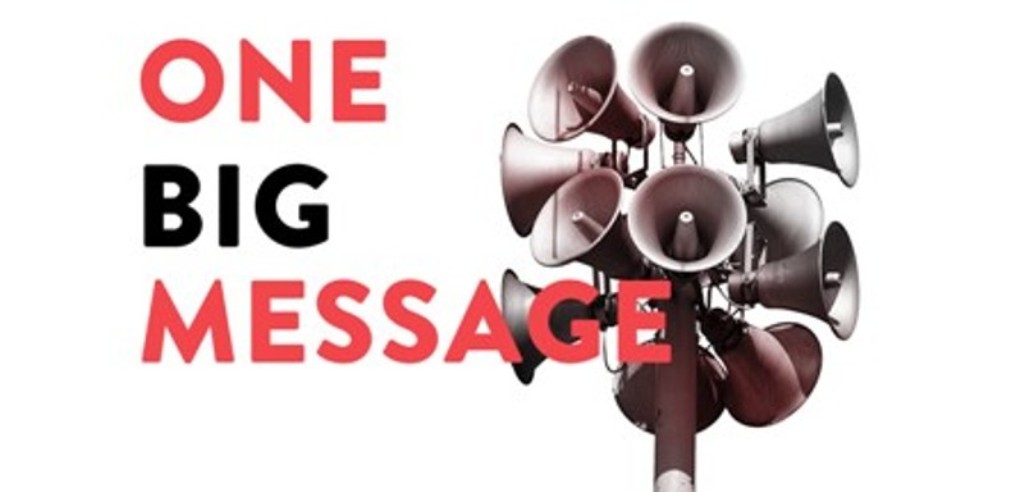 Social media destinations today seem to be a what’s trending, what's fashionable media where Social Icons are losing ground and where smaller ones are constantly being replaced with the next technologically fad driven way to communicate and share with one another on the internet.
Social media destinations today seem to be a what’s trending, what's fashionable media where Social Icons are losing ground and where smaller ones are constantly being replaced with the next technologically fad driven way to communicate and share with one another on the internet.Facebook makes a weak showing when it comes to ad performance for direct response marketing (lead generation) and this month, during a quarterly earnings call, David A. Ebersman, Facebook's chief financial officer, made a startling acknowledgment that confirms what many had suspected but were never able to prove - that the service had become less appealing for at least some of its users. And though Facebook is still the default social network for many people, perhaps it is no longer as crucial as it once was for social survival.
There are also recent studies that are suggesting that people still prefer non-paid ads for search and show that the higher CTRs come from ads with a lower position that actually look likes an organic result, even though it’s often paid. This points to the fact that people are trying to skip the ads and failing.
Organic search has been and still is the search method of choice. There will always be a reason to reach out over social channels as part of your overall marketing mix but why dedicate more and more resources chasing the next hot social channel when that same technology that is changing the social media landscape on an almost daily basis can now benefit companies the most by originating the bulk of your social media initiatives from your own site.
It is time to look more within your organization to find better and more stable ways of attracting customers and communicating with your existing customer base. And this can be done by forming onsite communities, online events and classified marketing initiatives to organically grow your inbound traffic.
These integrated initiatives can effectively reduce the cost of your online marketing and provide a host of benefits that cannot be achieved or more effectively controlled in any other way.
One Big Broadcast has been pioneering these integrated technologies for years. We can show you how to effectively reduce costs and increase your ROI, Inbound marketing, Service, Sales and Customer retention.
In what direction do you feel this is all going? And what would your suggestions be?
William Cosgrove
Do Twitter Ads Work? Comparing the Ad Performance of the Worlds Largest Social Networks.
Tags:
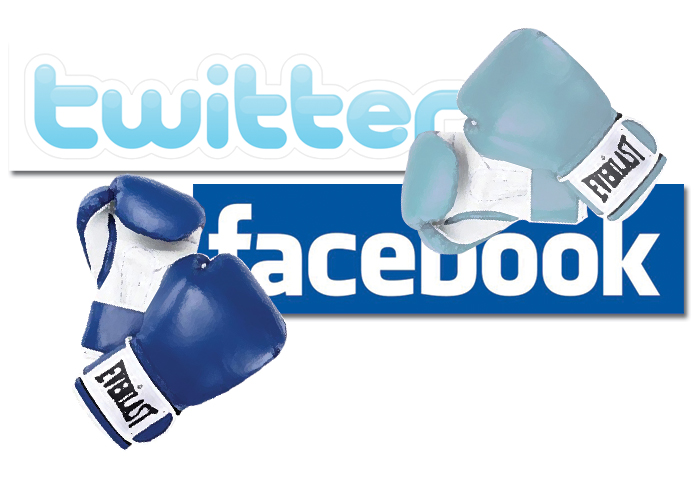 I agree with Kim who says that Facebook makes a weak showing when it comes to ad performance for direct response marketing (lead generation), especially compared to comparable offerings from Google. But what about Facebook vs. Twitter?
I agree with Kim who says that Facebook makes a weak showing when it comes to ad performance for direct response marketing (lead generation), especially compared to comparable offerings from Google. But what about Facebook vs. Twitter?
But I believe, and new data from the marketing agency Accuracast shows, that people still prefer non-paid ads
What is your experience?
William Cosgrove
Twitter’s initial public offering (IPO) is approaching, and Twitter just raised its price range to $23-$25, suggesting it’s feeling optimistic about the outcome. Investors may be a little more nervous though. According to polls, just 35% of Americans think buying Twitter stock is a good idea, whereas 51% of Americans thought Facebook stock was a good idea before its IPO last May.
As for me, I’m not planning to buy any Twitter stock. I’ve always said that Facebook makes a weak showing when it comes to ad performance for direct response marketing (lead generation), especially compared to comparable offerings from Google. But what about Facebook vs. Twitter? The fact is, Facebook ads have improved a great deal since the IPO last year, but Twitter still needs a lot of work as an advertising platform.
I dug into some data to find out if Twitter ads actually work and how they measure up to Facebook. I compared the two social networks in four categories:
- Network Reach – Which platform reaches the largest audience?
- Ad Performance – Do Facebook and Twitter ads drive real results?
- Mobile Ad Performance – Which social network owns the mobile space?
- Ad Formats – Who offers the most varied and effective ad types?
What I found is that Facebook is doing OK, but not great by any means – see one Forrester analyst’s recent open letter to Mark Zuckerberg, pointing out that Facebook comes dead last on a satisfaction index of digital marketing channels. Still, in terms of key numbers like Revenue per Visitor, Facebook is beating Twitter.
Let’s look at the data in more detail.
Twitter Vs. Facebook: Network Reach
Facebook gets an A+ for network reach, with 1.15 billion active users that share 4.75 billion items daily.
Twitter has decent reach, but not nearly as large, with 232 million active users posting 500 million tweets a day.

According to the Wall Street Journal, that’s just not enough of an audience for some advertisers. This much smaller reach is probably why Twitter claims just 13% of social media advertising budgets compared to 57% for Facebook.
Twitter Vs. Facebook: Ad Performance
It’s difficult to make an exact apples-to-apples comparison of ad performance on Twitter versus Facebook, because Twitter doesn’t release all the same metrics. But here’s what we do know:

According to AdWeek, “engagement rates†for Twitter ads can be as high as 1-3%, much higher than Facebook’s average CTR of 0.119%. The benefit for Twitter is that its ads are in-stream, rather than pushed off to the side. However, average CPM (cost per impression) is significantly higher on Twitter, at up to $3.50 compared to an average CPM of $0.59 on Facebook, and Twitter does not release stats on ROI (109% for Facebook).
One exact comparison is revenue per visitor (RPV): $0.93 for Facebook compared to $0.44 for Twitter. Facebook’s RPV is double that of Twitter’s, but note that Twitter’s RPV is up 300% year over year, while Facebook’s RPV has only improved by 39% YoY. (Facebook’s first click revenue per visitor is also double that of Twitter: $1.63 and $0.82, respectively.) Further, share of social referred visits is down for Facebook (at 62%, down 20% YoY), while Twitter’s share of social visits is just 6.8%, but growing fast, up 258% year over year).
Some further considerations:
- Twitter claims that Promoted Trends provide a 22% lift in brand conversion, 30% lift in positive mentions and 32% lift in retweets. These promoted trends can cost more than $200,000 a day, 33% more than they cost in 2012.
- Facebook ad performance varies greatly by vertical. For example, average CPC for alcohol brand ads is 45% higher than average. Gaming ads, on the other hand, have 30% higher CTR than average and 40% lower cost per click. (PDF)
- An AdAge survey ranked five online advertising platforms in terms of importance by ROI. Google was the clear winner, followed by Facebook, and then Twitter.
By my estimation, Twitter still has a lot to prove, maybe even more than Facebook.
Twitter Vs. Facebook: Mobile Ad Performance
In some ways, Twitter has the advantage here – on smaller mobile screens, it’s even more important for ads to be well-designed and feel organic. Because Twitter ads show up in the timeline instead of off to the side, they’re in a better position to dominate on mobile. Facebook ads, on the other hand, are in the right rail, which doesn’t even exist on the Facebook mobile app. As such, Facebook is failing its mobile advertisers.
Note, also, that Facebook only has one native ad format in the Facebook app, the App Promotion Ad. All Twitter ads show up both on desktop and mobile.

Here’s how the two networks are doing in terms of mobile performance metrics:

While Facebook currently leads in mobile market share, expect big growth from Twitter in this area. By 2015, Twitter is expected to net $1.33 billion in worldwide ad revenue, and more than 60% of that will be from mobile ads.
Twitter Vs. Facebook: Ad Formats

In June, Facebook cut its ad format options in half, in response to requests to simplify the system and eliminate redundancies. Facebook’s ad formats now include:
- App ads
- Domain ads
- Mobile app ads
- Offer ads
- Page-like ads
- Page post link ads
- Page post photo ads
- Page post text ads
- Page post video ads
- Sponsored stories
According to Robert Hof at Forbes, “rather than having to plan their campaign around which of 27 ad formats to use, advertisers instead will make choices on what they want to accomplish–such as amassing fans, getting people to install their app, or driving people to physical stores–and Facebook’s ad system will suggest the right kinds of ads to run.†My take is a little more cynical – in my view Facebook basically admitted that more than half of its ad formats didn’t work. This is generally not a great sign.
Twitter’s ad format offerings are much simpler:
- Promoted tweets
- Promoted accounts
- Promoted trends
My guess is they will introduce more ad options in the next year or so. Historically Twitter is slower to release new features than, say, a Google. (Not that the recent shift to include images in timelines is probably meant to increase ad clicks.)
Everyone seems to agree that both Twitter and Facebook are lacking when it comes to tracking, measurement, and analytics.
Conclusion: No Big Winners Here
In summary: Neither Twitter or Facebook is a great advertising option for direct response (lead generation) marketing. The intent just isn’t there compared to search. These social platforms are better for big brand advertising and engaging with your fans through content marketing (soft sells vs. e-commerce). If you have the budget for those kinds of marketing activities, then you’re better off on Facebook than Twitter, but the reality is, neither is all that effective and both platforms have a ton of work to do on the paid side. I suggest they look to Google AdWords and the Google Display Network for inspiration.
By Larry Kim the founder of WordStream and regular contributor to the Internet Marketing Blog
Title picture Courtesy of the Bloggers’ point of view
Â
 Most discussion on the generic topic of social influence centers on persuasion in a social environment.
Most discussion on the generic topic of social influence centers on persuasion in a social environment.Through an active online presence of blogging, commenting, participating in forums and on social networks or through word of mouth we all are in a way looking to influence and find influencers. Those that are actively involved in particular areas may be researching, simply voicing opinions or trying to draw attention to a product or service albeit from a positive or negative aspect.
Using influencers to increase market awareness of a firm amongst target markets is a method that can accelerate your visibility and culminate in getting known in circles that can have a huge impact on one’s success.
All of us who are actively involved in social networking whether it is online, offline or a combination of both are all looking to further ourselves or our company in some way.
Getting noticed by an influencer whether it be a decision maker in a company with whom you would like to do business, one who is well connected with key people in your industry or a current or potential customer can often act as an accelerator for business.
Influencer Marketing, as increasingly practiced in a commercial context, comprises four main activities:
Identifying influencers and ranking them in order of importance.
Marketing to influencers to increase your awareness within the influencer community
Marketing through influencers, Marketing with influencers and turning influencers into advocates of the firm.
Influencer Marketing is enhanced by a continual evaluation activity that sits alongside these four main activities.
Exactly what is included in Influencer Marketing depends on the context (B2C or B2B) and the medium of influence transmission (online or offline, or both). But it is becoming increasingly accepted that companies should be identifying and engaging with influencers.
As marketing experts Keller and Berry note, “Business is working harder and paying more to pursue people who are trying to watch and listen less to its messages." Targeting influencers is seen as a means of amplifying marketing messages, in order to counteract the growing tendency of prospective customers to ignore marketing.
Onsite social communities and newsletters are an effective and low cost method in which to engage with and gain valuable knowlege from influencers both in B2C and B2C.
Social Communities allow businesses not only to connect and follow existing customers but also to engage with their employee base. This is a centralized way in which to communicate with, retain and turn your existing customers and employees into marketing influencers and brand ambassadors.
On the B2C side Newsletters help to connect with influencers to draw their attention and educate them on the value of your company and what makes you unique.
But a large part of the problem is that many companies view social technologies as yet another tool to be implemented rather than as an enabler of organizational and marketing transformation.
It is said that one in every 10 Americans is what they call an "influential." These people have a tremendous impact on the rest of society because their ideas and opinions are sought out by the colleagues, friends, family and community members around them. The conversations they hold and the examples they set have the power to shape the community's behaviors and attitudes.
Based on this statistic, how many untapped influential customers or employees might already be in your database or working within your organization. And with a one in ten chance of finding an influencer and making them an advocate for your business through that newsletter, onsite community, forum or professional group it is an economical avenue worth pursuing that can provide substantial long term rewards.
William Cosgrove
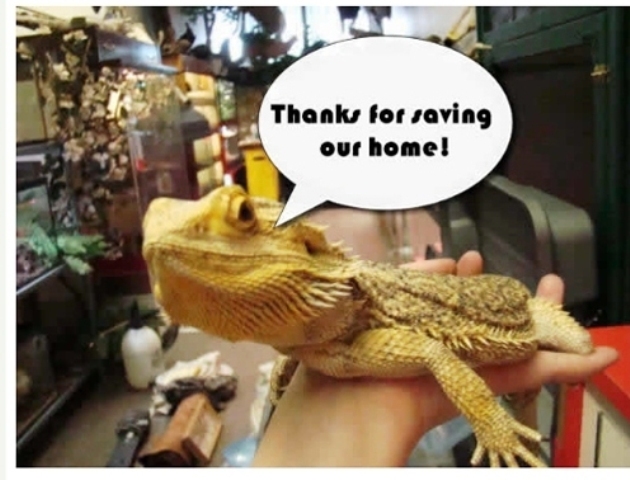 It was the night before Christmas, well very close, and all through the house the creatures were stirring because everything was in doubt. A knock at the door and who would appear but a scrooge with an eviction notice- this was no Christmas cheer for Cin-e-ma-zoo.
It was the night before Christmas, well very close, and all through the house the creatures were stirring because everything was in doubt. A knock at the door and who would appear but a scrooge with an eviction notice- this was no Christmas cheer for Cin-e-ma-zoo.One cold day in December After year twenty-two - Gary Oliver, CinemaZoo's founder did not know what to do.
CinemaZoo the Pacific Northwest's largest private sanctuary for exotic creatures was founded on the good intentions of people who acquired an exotic pet but didn’t think it through. That exotic bird was beautiful but was too loud and that cute little sugar glider looked like a cuddly pet but it was noisy all night and would emit nasty things if you tried to hold it. And that pet monitor lizard- it just ate the owner's cat.
 All of these now unwanted and abandoned creatures ended up at CinemaZoo. Close to 300 of these exotic creatures were now facing eviction and, even worse, euthanasia.
 Social media came to the rescue. Gary contacted One Big Broadcast and they pledged to help. First, all of the traditional media were contacted and-
 -Within days local TV stations were airing the news, Vancouver's daily newspaper, The Province, ran a front page story and the drama caught the hearts and minds of the entire province.
 The efforts main focus was centered around One Big Broadcasts socialcasting platform. While the news events were happening the OBB team was dominating the Internet with UGC (User Generated Content) content.
 OBB’s social media tools allowed them to quickly upload images to their broadcast and enabled blogs and GPS galleries from one central CMS console. They also delivered all the ongoing updates via email, SMS, social media and social networking sites. Finally OBB’s widgets updated web sites and blogs carrying the feeds.
Cinemazoo's news dominated every search term on Google and Yahoo within days. One Big Broadcast was able to funnel the traffic into Cinemazoo's donation page.
Money started flowing in online via ecommerce microsite pages One Big Broadcast had created. Donations poured in as the public opened their wallets, bookings soared and merger talks followed from a major zoo for funding and expansion.
 As Gary Oliver said later during one of his follow-up TV interviews, "I wouldn't be here if it wasn't for One Big Broadcast.â€
This is a story of how powerful social media can be in effectively getting out a message to make a difference. With the proper technology and expertise no other form of multi-media channeling of information can have the immediate and lasting impact of a properly orchestrated social media campaign.
The story ends with this video and a HAPPY ending for all: By William Cosgrove
 I joined a Twitter chat about the value of social this week and during the course of the conversation, was surprised to learn that for some people, the idea of enabling employee advocates was a novel concept. So many people recognize the power of social media for marketing and external evangelism, yet they neglect the power within their own organization!
I joined a Twitter chat about the value of social this week and during the course of the conversation, was surprised to learn that for some people, the idea of enabling employee advocates was a novel concept. So many people recognize the power of social media for marketing and external evangelism, yet they neglect the power within their own organization!
We all know that social technology enables human connections. But the thing is, there are no boundaries between consumers or employees, because most of us are both. Technology has also amplified the speed and reach of every type of communication. This evolution in how we share information and knowledge goes far beyond just social "media." It's a complete transformation in the way we interact. When businesses fail to take advantage of the valuable assets in their organization, they miss out on an excellent way to create both customer engagement and employee empowerment.
Social strategist Ted Rubin was featured recently in a great article by Cheryl Connor, in Forbes. He said, "When someone asks, ‘What is the ROI of Social?' I ask back...‘What's the ROI of Loyalty, what's the ROI of Trust?' In order to sell the concept, you've got to talk in a language they'll understand."
I'd take this a step further, to ask employers, "What's the ROI of employee engagement and effective communication with consumers?" When employees are empowered to make direct connections with the customers they serve, it fuels productivity and loyalty from within. In addition to having satisfied employees, an organization can create an internal army of brand ambassadors and influencers who can help promote the business.
So often in marketing conferences, we hear about an employee who has gone above and beyond for the sake of a customer. In this social and connected world we live in, this single experience can spread like wildfire, promoting the organization in an organic, authentic way. Giving your employees the power to speak out on behalf of your organization (with some guidelines in place) can only help broaden the voice of your brand voice and increase the level of visibility in the marketplace.
What does it take to develop a following of employee brand ambassadors? Start with these guiding principles:
- Make your organizational knowledge accessible to all employees through the use of social technology within the business.
- Empower employees to participate in social media on behalf of the brand.Â
- Put clear, easy-to-follow guidelines in place and have a plan for dealing with potential mistakes.Â
- Facilitate innovation by listening and encouraging feedback around processes, services and products.Â
Over the next few years, it's going to become clear that businesses will need to give employees a social experience just like the ones they get in their personal lives. This will not only help businesses retain valuable employees, but it will also be a benefit to the bottom line--and a significant competitive advantage for those that do it right. It will improve employee engagement, productivity and innovation. It will help employees deliver exemplary customer experiences to consumers. It will allow organizations to rally their largest group of brand advocates: the employees themselves.
One thing is absolutely true in this new world of free-flowing information: everyone has a voice and the platform to use it. If you're not using it, someone else will.
Michelle Killebrew
Relevant Articles:
Â
LinkedIn Beats Facebook And Twitter as Top Source Of Visits for Corporate Websites [Study]
Tags:
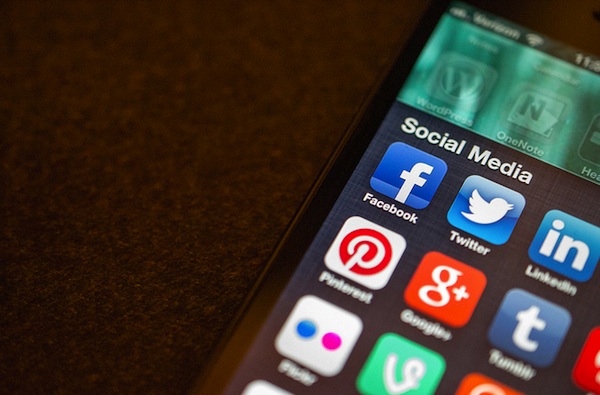 LinkedIn is far and away the biggest source of social media traffic to corporate websites, but Twitter is playing an increasingly important role, largely at the expense of Facebook, whose share has dropped sharply from two years ago, reveals a new study.
LinkedIn is far and away the biggest source of social media traffic to corporate websites, but Twitter is playing an increasingly important role, largely at the expense of Facebook, whose share has dropped sharply from two years ago, reveals a new study.
Investis’ first Audience Insight Report (PDF) tracked the evolving use and changing requirements of website traffic to corporate websites, and discovered that visits are up almost one quarter (24 percent) over the past two years, driven mostly by mobile, which has seen a 400 percent increase since 2011.
54 percent of all visitors still come via search engines, but social media’s stock is on the rise, led by LinkedIn, which accounts for 64 percent of all visits from social networking sites. This is far ahead of both Facebook, at 17 percent – a number which has almost halved in the past two years (from 30 percent) – and Twitter, at 14 percent, which is more than three times its share in 2011 (4 percent).
Meanwhile, Google+ accounts for just 0.1 percent of all corporate website traffic – half that of Flickr.
(Source: Investis.)
RELATED:
By Shea BennettCALENDAR
CATEGORIES
TAGS
TWITTER POSTS
CALENDAR
- powered by
- One Big Broadcast
- creative by
- WebStager
© 2025 One Big Broadcast | All rights reserved

![LinkedIn Beats Facebook And Twitter As Top Source Of Visits For Corporate Websites [STUDY]](http://www.mediabistro.com/alltwitter/files/2013/10/social-corporate-website-traffic.png)